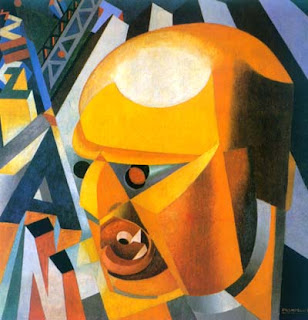Monday, 10 December 2012
Monday, 3 December 2012
Dartmoor Myths, Legends and Stories
The Hound of the
Baskervilles
Sir Charles Baskerville is found
lying dead on the grounds of his country
house, Baskerville Hall. The cause is ascribed to a heart attack. Fearing for
the safety of Sir Charles's nephew and only known heir, Sir Henry Baskerville,
coming from America to claim his inheritance, Dr James Mortimer travels to
London and asks Sherlock Holmes for help.
Mortimer
explains that the Baskerville family is afflicted by a curse. According to an
old account, over two centuries ago Hugo Baskerville was infatuated with a
farmer's daughter. He kidnapped her and imprisoned her in his bedroom. She
escaped and the furious Baskerville offered his soul to the devil if he could
recapture her. Aided by friends, he pursued the girl onto the desolate moor. Baskerville and his victim were
found dead. She had died from fright, but a giant spectral hound stood guard
over Baskerville's body. The hound tore out Baskerville's throat, then vanished
into the night.
Sir
Charles Baskerville had become fearful of the legendary curse and its hellhound. Mortimer decided that Sir
Charles had been waiting for someone when he died. His face was contorted in a
ghastly expression, while his footprints suggested he was running from
something. The elderly man's heart was not strong, and he had planned to go to
London the next day. Mortimer says he had seen the footprints of a
"gigantic hound" near Sir Charles's body, something not revealed at
the inquest.
“The
Hound of the Baskervilles” is the
third of four crime novels by Sir Arthur Conan Doyle featuring the detective Sherlock Holmes. Originally serialised in The Strand Magazine from August 1901 to April 1902, it is
set largely on Dartmoor in Devon
in England's West Country and tells the story of an attempted
murder inspired by the legend of a fearsome, diabolical hound.
In
2003 the book was listed on the BBC's The
Big Read poll of the UK's
"best-loved novel.
I picked this Legend because I read the book when I was in year ten and I loved the Darkness in the Story about the "Hell Hound" and how no one can kill it. it'll be good to base a game on such a solid storyline Made by one of the greatest authors of the twentieth century.
http://www.list.co.uk/article/2772-arthur-conan-doyle-the-hound-of-the-baskervilles-1902/ 03/12/2012
http://www.aods.org/DRAMAhoundofthebask.asp 03/12/2012
Bowerman's Nose
Bowerman's Nose is a stack of weathered granite on Dartmoor, Devon, England. It is situated on the northern slopes of Hayne Down, about a mile from Hound Tor and close to the village of Manaton at grid reference SX742805. It is about 21.5 feet (6.6 m) high and is the hard granite core of a former tor, standing above a 'clitter' of the blocks that have eroded and fallen from it.
Legend
One version of the local legend relates that a huntsman called Bowerman lived on the moor about a thousand years ago. When chasing a hare he and his pack of dogs unwittingly ran into a coven of witches, overturned their cauldron and disrupted their ceremony. They decided to punish him, and the next time he was hunting, one of the witches turned herself into a hare, and led both Bowerman and his hounds into a mire. As a final punishment, she turned them to stone - the dogs can be seen as a jagged chain of rocks on top of Hound Tor, while the huntsman himself became the rock formation now known as Bowerman's Nose.
http://en.wikipedia.org/wiki/Bowerman's_Nose 03/12/2012
I chose this Legend Because the story is so well known and it would be good to base a game around something the player already knows and feels to know about then something from scratch that the player can't grip onto a storyline they can't understand.
Game Concept
Location: Dartmoor
Ideas:
. A Game based on all Dartmoor Legends Coming back in real life
. The Player must Defeat all the "Demonic" Creatures
. You are a detective whom is investigating the "Strange" disappearances in Dartmoor National park
. At the start of the game your not sure why but there is a expert in paranormal Activity that has been Escorting you around
. Certain Quests/Missions must be completed so you can defeat particular "Monsters/demons"
. Crazed people walk the streets in the town caused by extreme trauma and possession
. Darkness is where Evil hunt stay away from it even people who take Torches aren't safe as they die out quicker than expected
(PLOT) : The player/Detective tuns out to be a long descendent of The Hunter Bowerman who was turned into a rock by the Witch's that caused the Demonic outbreak
.
Monday, 19 November 2012
Task 3
1. we had the image of the shoe and selected an area for distortion by using the pen tool.
2. we right clicked and Selected the our Selection outline, the went into the select tool bar and "Save selection".
3. we changed the Hue and Saturation to change the colour of the Selected part of the shoe.
4. After that we Merged the existing layer and crated a new layer for the background.
5. changed the colour of the background.
6. we Held alt and dragged a Duplicated version of the original image 3 times.
7. we used the Hue and Saturation to Distort the colours of each of the images.
8. after we Re merged the Image again for the Final Piece.
I like how successful the final image has turned out. And even though the original image is the bottom left I much prefer the bottom right image. I prefer this image because the colours are Bright and noticeable and it's colours has a near trance to it.
2. we right clicked and Selected the our Selection outline, the went into the select tool bar and "Save selection".
3. we changed the Hue and Saturation to change the colour of the Selected part of the shoe.
4. After that we Merged the existing layer and crated a new layer for the background.
5. changed the colour of the background.
6. we Held alt and dragged a Duplicated version of the original image 3 times.
7. we used the Hue and Saturation to Distort the colours of each of the images.
8. after we Re merged the Image again for the Final Piece.
I like how successful the final image has turned out. And even though the original image is the bottom left I much prefer the bottom right image. I prefer this image because the colours are Bright and noticeable and it's colours has a near trance to it.
Alexander Rodchenko
Alexander Rodchenko was a Russian Constructivist Artist whom was also one of the founders of the art movement back in the early twentieth century. He was originally a graphic designer that later transformed into photography in which he was very successful with in his life.
Rodchenko Was born in St Petersburg but later moved to Kazan because of his fathers death in 1909. He later married in 1914 to Varvara Stepanova whom he met before in the "Kazan school of Art"
I came across this image in which influenced me to do the Constructivism work that is below the influence image:
My Final Constructivism Work
Before I made it look better:
After I made it look better:
I love how I Made more of a communist effect with the second edit e.g. The Hammer and sickle, Stalin, the fist and The Communist star, also the Russian caption "Мы победим всех, кто стоит на нашем пути" translated into English says "We will conquer all who stand in our way" .
Monday, 12 November 2012
Colour and Grey Scale Watch
Watch 1 Drawing coloured:
I chose these colours because I saw How Well Blue and Orange Go together. My original idea involved the part within the glass ( the Aqua Green Bit ) to be a dark Orange. But as the production came along I discovered The Aqua Green and thought it would suit it more.
Drawn Example 1
Drawn Example 2
I chose these colours because I saw How Well Blue and Orange Go together. My original idea involved the part within the glass ( the Aqua Green Bit ) to be a dark Orange. But as the production came along I discovered The Aqua Green and thought it would suit it more.
Watch 2 Drawing Grey Scale shaded:
I feel the shading on My image Works Very well For what it's based on. as you can see in the Second image below this There is a huge improvement.
Drawn Example 2
Drawn Example 3
Monday, 5 November 2012
Line Drawings
The
strip:
|
|
"Piled
Higher and Deeper" (PhD) is the comic strip about life (or the lack
thereof) in academia.
|
|
Featured:
|
|
| "Piled Higher and
Deeper" the comic strip has appeared in The Stanford Daily, MIT,
Carnegie Mellon University and Caltech newspapers among over 50 others. The strip has appeared or been featured in the journal Nature, Science Magazine the Chronicle of Higher Education, IEEE Potentials magazine, Math Horizons magazine, Stanford Magazine and Canada's The Peer Review magazine among others, and has been linked to by USA Today's, The NY Times and The Washington Post's websites. |
|
http://www.phdcomics.com/comics/archive.php?comicid=1342
05/11/2012
In this comic strip the lines are consistent. The thickness of lines barely changes in each strip e.g. The Characters, Buildings, The tree, the grass and the food. The facial expression in the characters Can be Changed Dramatically by only changing a few lines in the strip, e.g. Strip 4 and 5 ' Male character's Facial Expression.
Monday, 15 October 2012
Futurism and Constructivism
futurism started in the 20th century,the characteristics of this art movement are That it emphasized and glorified themes associated with contemporary concepts of the future, including speed, technology, youth and violence, and objects such as the car, the aeroplane and the industrial city.
A Futurist Artist
Reference: Artist reference "Fillippo"
David Carson's Print: David Carson's Site and Picture Reference
The Futurism art that was Inspired by Fillippo is From a Famous Graphic designer called David Carson who's website link and referenced Picture information is above. I like the modern take of a futurist look on his print, although it's for a Surf Film Festival client that he took on during 2011 it has an amazing resemblance towards the Futurism era of the early 20th century (1909-1916).
Constructivism Started in 20th Century Constructivism was the last and most influential modern art movement to flourish in Russia in the 20th century. It evolved just as the Bolsheviks came to power in the October Revolution of 1917, and initially it acted as a lightning rod for the hopes and ideas of many of the most advanced Russian artists who supported the revolution's goals.
A Constructivism Artist
Vladimir Tatlin was central to the birth of Russian Constructivism. Often described as a "laboratory Constructivist," he took lessons learned from Pablo Picasso's Cubist reliefs and Russian Futurism, and began creating objects that sometimes seem poised between sculpture and architecture. Initially trained as an icon painter, he soon abandoned the traditionally pictorial concerns of painting and instead concentrated on the possibilities inherent in the materials he used - often metal, glass, and wood. He wanted above all to bend art to modern purposes and, ultimately, to tasks suited to the goals of Russia's Communist revolution.
Reference:Artist Reference "Vladimir"
some of Vladimir Tatlin's work:
Some Work hat was most likely Inspired by Vladimir Tatlin's work:
A Futurist Artist
The founder of Futurism and its most influential personality was the Italian writer Filippo Tommaso Marinetti. Marinetti launched the movement in his Futurist Manifesto, which he published for the first time on 5 February 1909 in La gazzetta dell'Emilia, an article then reproduced in the French daily newspaper Le Figaro on 20 February 1909. He was soon joined by the painters Umberto Boccioni, Carlo Carrà, Giacomo Balla, Gino Severini and the composer Luigi Russolo.
Marinetti expressed a passionate loathing of everything old, especially political and artistic tradition. "We want no part of it, the past", he wrote, "we the young and strong Futurists!" The Futurists admired speed, technology, youth and violence, the car, the airplane and the industrial city, all that represented the technological triumph of humanity over nature, and they were passionate nationalists. They repudiated the cult of the past and all imitation, praised originality, "however daring, however violent", bore proudly "the smear of madness", dismissed art critics as useless, rebelled against harmony and good taste, swept away all the themes and subjects of all previous art, and gloried in science.
some of his work:Reference: Artist reference "Fillippo"
some work that was most likely Inspired by Filippo Tommaso Marinetti's work:
The Futurism art that was Inspired by Fillippo is From a Famous Graphic designer called David Carson who's website link and referenced Picture information is above. I like the modern take of a futurist look on his print, although it's for a Surf Film Festival client that he took on during 2011 it has an amazing resemblance towards the Futurism era of the early 20th century (1909-1916).
Constructivism Started in 20th Century Constructivism was the last and most influential modern art movement to flourish in Russia in the 20th century. It evolved just as the Bolsheviks came to power in the October Revolution of 1917, and initially it acted as a lightning rod for the hopes and ideas of many of the most advanced Russian artists who supported the revolution's goals.
A Constructivism Artist
Vladimir Tatlin was central to the birth of Russian Constructivism. Often described as a "laboratory Constructivist," he took lessons learned from Pablo Picasso's Cubist reliefs and Russian Futurism, and began creating objects that sometimes seem poised between sculpture and architecture. Initially trained as an icon painter, he soon abandoned the traditionally pictorial concerns of painting and instead concentrated on the possibilities inherent in the materials he used - often metal, glass, and wood. He wanted above all to bend art to modern purposes and, ultimately, to tasks suited to the goals of Russia's Communist revolution.
Reference:Artist Reference "Vladimir"
Reference: "Vladimir's tower"
The Image Reference: The Shard image Reference
The Shard is the largest skyscraper in the UK particularly London. It is a remarkable piece of architecture much like the constructivist Artist Vladimir Tatlin and his "Tatlin's Tower". I was confused when researching Tatlin's work as Information about him says he's a Constructivist artist and yet he's work is more Related to architecture and Designs similar to that.
Subscribe to:
Comments (Atom)





















